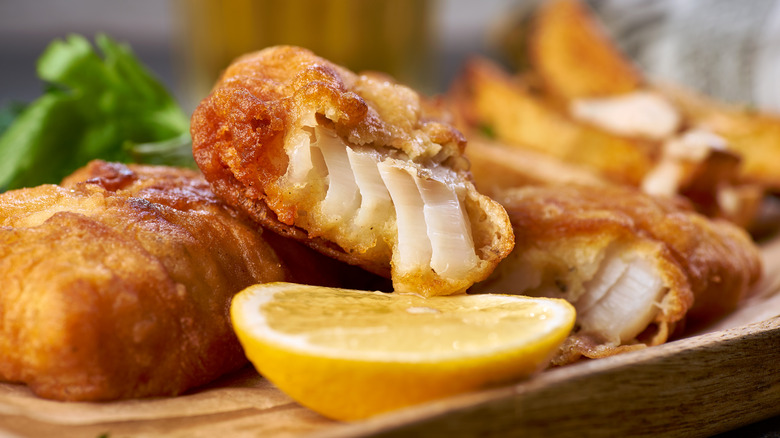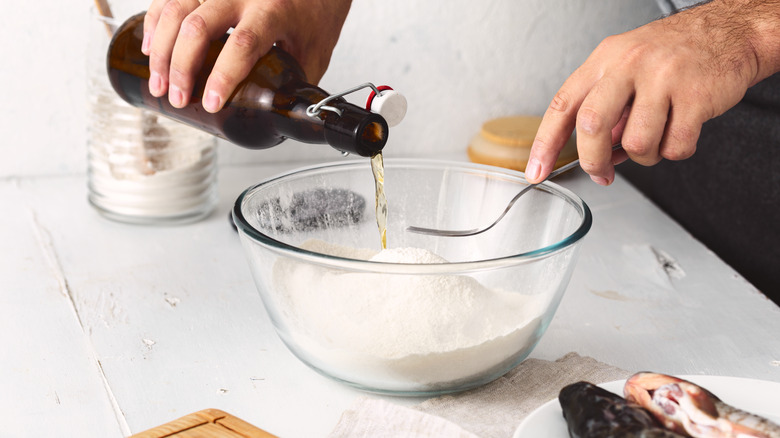Why Beer Is Better Than Water When Frying Batter
Whether it's part of a deep-fried snack or a meal of fish and chips, we all love hearing the satisfying crunch of a perfectly golden batter. The stuff is made with flour, cornstarch, baking powder, and a liquid. Using water or milk is common, but when it comes to getting that perfect taste and texture (without burning), beer is king.
Beer is a great ingredient for your crispy batter recipe due to a combination of factors: its evaporation time, the proteins present in its makeup that aid with foaming and thermal insulation, and the presence of carbon dioxide (CO2).
When frying anything, you have to get the timing right. If the batter takes too long, then the food can end up overcooked. Having great batter is irrelevant if the food inside is burnt. The alcohol in beer evaporates faster than water, meaning the batter doesn't have to spend nearly as long cooking. Because of this, you're free to prioritize the filling instead of worrying about whether the batter is done.
Beer's protein contents leads to better frying
Beer's benefits stretch beyond cooking time. Beer has a high CO2 content. Some breweries even force extra carbonation due to time constraints, which induces a useful chemical reaction. When the CO2 dissolves, the mix will froth and bubble, expanding the batter and resulting in a crisp texture. Better yet, the proteins in beer protect the froth by forming a film around the bubbles, which prevents them from bursting quickly.
This protective layer formed by the foam also makes a great thermal insulator, with the heat from the oil transferring to the batter instead of the filling. This leaves you free to crank up the heat and utilize the Maillard reaction. When food is cooked at a high temperature (possible here, thanks to the foam created by the beer), sugars and amino acids react and create rings on the food's surface, leading to the brownish hue you often see on perfectly heated food.

